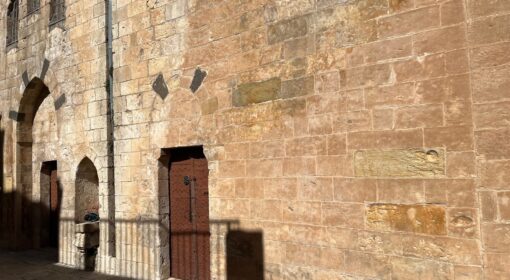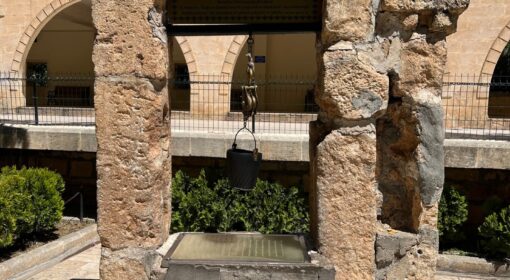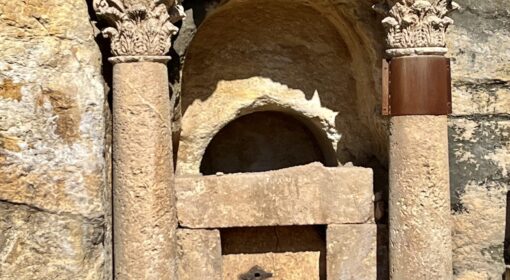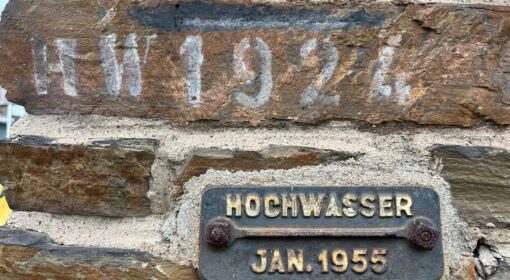By Frank van Steenbergen
Close to the old center of Urfa, at one time Edessa, and just above it there are hills with numerous caves. Imagine these caves being at one time crowded with anchorites, people who chose an ascetic live, having themselves walled in the caves, being provided with food and water through a small opening. Denouncing all earthly things while still alive, they chose to be close to God. When no food was taken, no shit was there to be removed, the wall was broken as it was clear that the hermit had died.
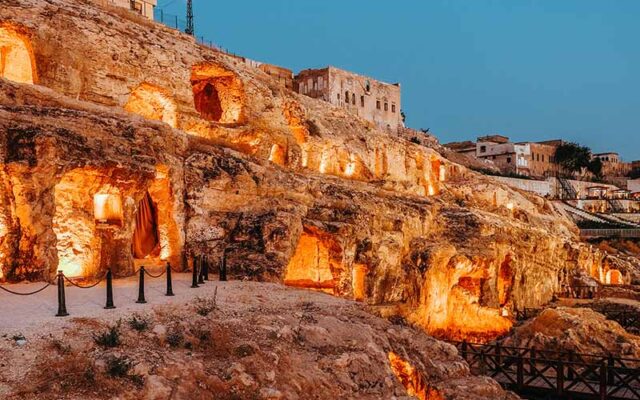
Edessa from the fourth century AD was a magnet for anchorites. The hills were a catchment of spirituality. Besides the hermits in the caves, there were others that lived on pillars or that chose to live in the wilderness, exposing themselves to the elements, depriving themselves of sleep or fastening in extremis. Such hardship is known to create an altered state of mind that combined with a strong frame of belief may cause visions and the experience of nearness to God. The suffering could also go wrong with the struggle ending in madness. Hence in early Christian Edessa there were manuals and instructions to guide the ascetics and prevent them from becoming derailed and losing the struggle with the evil they were challenging in their isolation.
The anchorites were much revered – for their visionary wisdom and for the blessing their suffering was bringing to the city. Some were recognized as Saints and their iconic lives were retold and pictured over the centuries for the moral lessons they contained.
The hagiographic Story of Saint Abraham of Edessa and his niece Mary is a main example – still widely popular many centuries after the events as is clear from popular printings more than thousand year later. It is a story of extreme choices. Abraham of Qidan, as he was called earlier, seemed to have his life all set out. He was born from wealthy merchants in the early 4th century. He married a woman of noble descent. Yet soon after the wedding, his life took an entirely different corner, as Abraham asked to be released from the marriage and wanted to become an ascetic. The chronicle of Edessa marks the year 356 AD as the beginnning of his life as a hermit in one of the caves close to the city. He is said to have died eleven years later. His life as a hermit was a succession of acts of self-denial and struggle with the devil, who was intent on wrong footing the recluse and break his sanity – like he did with so many other hermits.
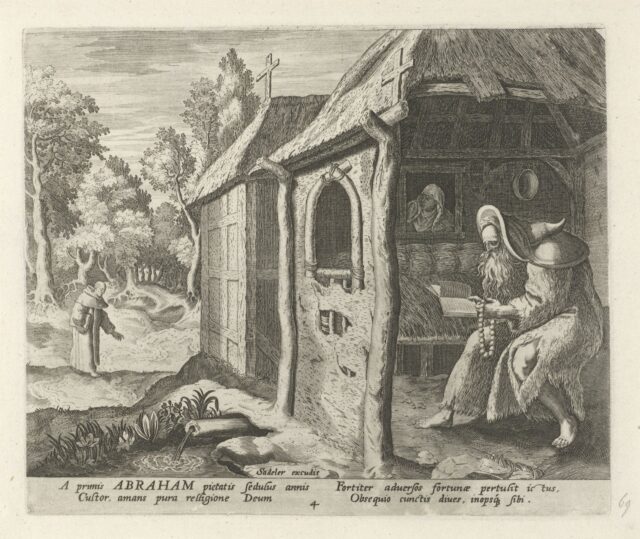
Abraham’s heaviest trial came after he had taken care of Mary, his niece. After she lost her parents at the age of 7, she was given into custody to Abraham, who had a cell built in front of his and introduced her to ascetic way of live. She followed Abraham’s example, yet a time came when she came of age, Her physical beauty attracted the attention of a young man, who pretended to be an anchorite too but who seduced the virgin hermit girl and had sex with her.
Filled with shame Mary left her cell, expecting never to find forgiveness or grace, either from God or her uncle. In total denunciation she became a whore in one of the cities brothels. In a dream a few days later Abraham saw a snake devouring a white dove and alarmed discovered the cell of his niece is empty. It is then in an ultimate sacrifice that Abraham gives up his secluded ascetic life and the rules of abstinence. He ventures into the world in search for Mary.
It is only after a year that he is tipped of her whereabouts in the whorehouse. Abraham dresses up as a soldier and enters the brothel as a customer to seek the services of the most beautiful girl in the house. This is how Mary and Abraham are united and how Mary is rescued and redeemed. Abraham brings her back to the caves above the city, but this time he gives her the inner cell, where Mary lives in seclusion for another fifty years, regaining God’s mercy and sanctity of her own.
Saint Abraham of Edessa and Saint Mary were not the only saints that came from the hills around Edessa/Urfa. There is Saint Alexius, Saint Alexander, Saint John and Saint Samuel, often people who give comfort to lead a live of extreme ascetism or meet the fate of persecution.
